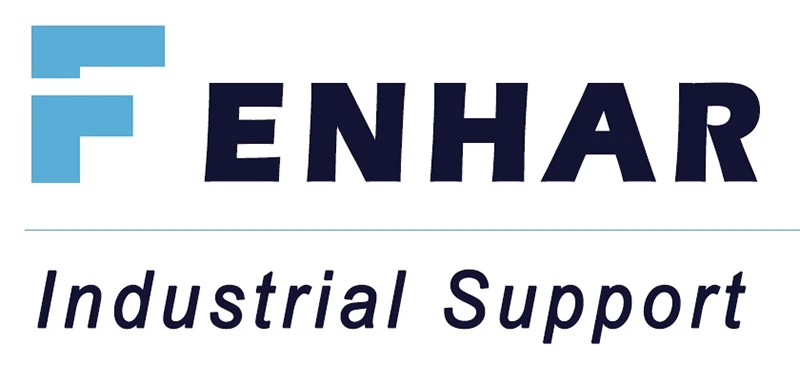Schaltanlagen spielen eine entscheidende Rolle bei der Steuerung und dem Schutz von Stromkreisen. Um ihren sicheren und zuverlässigen Betrieb zu gewährleisten, sind hochwertige Isoliermaterialien unerlässlich. Isolierfolien, wie z. B. Epoxid-Glasfaserplatten (G-11/FR-4) und Bakelitplatten werden aufgrund ihrer hervorragenden elektrischen Isolierung und ihrer strukturellen Eigenschaften häufig in diesen Systemen verwendet. Dieser Artikel befasst sich mit den Anwendungen und Vorteilen dieser Materialien in Schaltanlagen und gibt einen Einblick, warum sie in der Branche unverzichtbar sind.

Elektrische Isolierung für Hochspannungskomponenten
Eine der Hauptfunktionen von Isolierplatten in Schaltanlagen ist elektrische Isolierung. Sowohl Epoxid-Glasfaserplatten (insbesondere die Sorten G-11 und FR-4) als auch Bakelitplatten bieten hervorragende Isoliereigenschaften und sind daher ideal zur Vermeidung von Kurzschlüssen, Lichtbögen und Leckagen.
- G-11 Epoxy-Glasfaserplatten sind für ihre hervorragende elektrische Festigkeit und Feuchtigkeitsbeständigkeit bekannt, wodurch sie sich für Hochspannungsanwendungen eignen.
- FR-4 Epoxy-Glasfaserplatten bieten ähnliche Vorteile, jedoch mit verbesserten flammhemmenden Eigenschaften, was sie besonders nützlich für Systeme macht, bei denen die Brandsicherheit eine Priorität ist.
Durch die Verwendung dieser Materialien können Schaltanlagen sicher unter hohen Spannungen betrieben werden, ohne dass die Gefahr eines elektrischen Ausfalls besteht, was die Langlebigkeit sowohl der Geräte als auch des Stromnetzes gewährleistet.
Strukturelle Unterstützung für elektrische Komponenten
Neben der Isolierung dienen Epoxid-Glasfaser- und Bakelitplatten auch als strukturelle Trägermaterialien in Schaltanlagen. Dank ihrer hohen mechanischen Festigkeit können sie mechanischen Belastungen, Stößen und Vibrationen standhalten und eignen sich daher ideal für die Montage elektrischer Komponenten wie Leistungsschalter, Trennschalter und Sammelschienen.
- Epoxid-Glasfaserplatten werden aufgrund ihrer Langlebigkeit und ihrer Widerstandsfähigkeit gegen Verformung unter Last häufig als Strukturplatten verwendet. Sie bieten zuverlässigen Halt und sorgen dafür, dass die Bauteile während des Betriebs sicher an ihrem Platz bleiben.
- Bakelitplatten sind zwar nicht so widerstandsfähig wie Glasfasern, aber dennoch eine kostengünstige Option für Anwendungen mit geringer Last und bieten eine ausreichende mechanische Festigkeit für kleinere Schaltanlagen.
Isolierung zwischen Stromkreisen
Schaltanlagen erfordern eine strikte Trennung zwischen verschiedenen Stromkreisen, um Kurzschlüsse und elektrische Fehler zu vermeiden. Epoxid-Glasfaser- und Bakelitplatten werden häufig als Barrieren oder Trennwände verwendet, die eine wirksame Isolierung zwischen Hochspannungs- und Niederspannungskomponenten gewährleisten.
- Diese Platten dienen als physische Trennwände und verhindern den versehentlichen Kontakt zwischen stromführenden Teilen, der zu gefährlichen elektrischen Entladungen führen könnte.
- Ihre feuerfesten Eigenschaften bieten außerdem einen zusätzlichen Schutz, da sie sicherstellen, dass sich interne Fehler nicht ausbreiten und weitere Schäden verursachen.
Schutz vor elektrischen Lichtbögen
Elektrische Lichtbögen sind eine häufige Gefahr in Hochspannungsumgebungen. Die flammhemmenden Eigenschaften von Epoxy-Glasfaserplatten (FR-4) sind besonders nützlich beim Schutz vor Lichtbögen. In Schaltanlagen können sie dazu beitragen, die Auswirkungen von Lichtbögen einzudämmen und abzuschwächen, um Schäden an den umliegenden Geräten zu verhindern.
Bakelitplatten bieten auch einen gewissen Lichtbogenschutz, insbesondere in Niederspannungsanlagen. Durch die Einbeziehung dieser Materialien in die Konstruktion können die Hersteller von Schaltanlagen das Brandrisiko verringern und die Sicherheit des Systems insgesamt erhöhen.
Tragende Stromschienen und Leiter
Stromschienen sind wesentliche Bestandteile von Schaltanlagen, die große Mengen an elektrischem Strom transportieren. Aufgrund ihrer Größe und kritischen Rolle benötigen sie eine starke und zuverlässige Unterstützung. Epoxid-Glasfaserplatten (G-11) werden aufgrund ihrer hohen Zugfestigkeit und hervorragenden elektrischen Isolierung häufig als Sammelschienen-Tragstrukturen verwendet.
- Diese Platten können das Gewicht der Stromschienen tragen und den im Betrieb auftretenden Kräften standhalten, ohne ihre Isoliereigenschaften zu beeinträchtigen.
- Bakelitplatten können auch in kleineren Niederspannungsanlagen zur wirtschaftlichen Abstützung von Stromschienen und anderen Leitern verwendet werden.
Widerstandsfähigkeit gegen Umwelteinflüsse
Schaltanlagen sind häufig rauen Umgebungsbedingungen wie Feuchtigkeit, Chemikalien und Temperaturschwankungen ausgesetzt. Epoxid-Glasfaserplatten (G-11/FR-4) sind für ihre Feuchtigkeitsbeständigkeit und chemische Stabilität bekannt, wodurch sie sich ideal für den Einsatz im Freien oder in industriellen Umgebungen eignen.
- Diese Materialien können Feuchtigkeit, korrosiven Gasen und extremen Temperaturen standhalten, ohne ihre isolierenden Eigenschaften zu verlieren.
- Bakelitplatten sind auch in trockenen Umgebungen wirksam und bieten zuverlässige Isolierung und strukturelle Unterstützung in kontrollierten Innenräumen.

Schlussfolgerung: Warum Isolierfolien in Schaltanlagen unverzichtbar sind
Zusammenfassend lässt sich sagen, dass Epoxid-Glasfaserplatten (G-11/FR-4) und Bakelitplatten sind wichtige Komponenten in Schaltanlagen und bieten eine Kombination aus elektrischer Isolierung, mechanischer Festigkeit und Feuerbeständigkeit. Ihre Fähigkeit, elektrische Komponenten zu stützen, elektrische Fehler zu verhindern und vor Umweltgefahren zu schützen, macht sie für die Aufrechterhaltung der Sicherheit und Effizienz von Schaltanlagen unverzichtbar.
Durch die Einbeziehung dieser Materialien in die Konstruktion von Schaltanlagen können die Hersteller sicherstellen, dass ihre Systeme zuverlässig und langlebig sind und den Sicherheitsstandards der Branche entsprechen. Ob in Hoch- oder Niederspannungsanwendungen, Isolierfolien bilden das Rückgrat des Schutzes für moderne elektrische Systeme.
